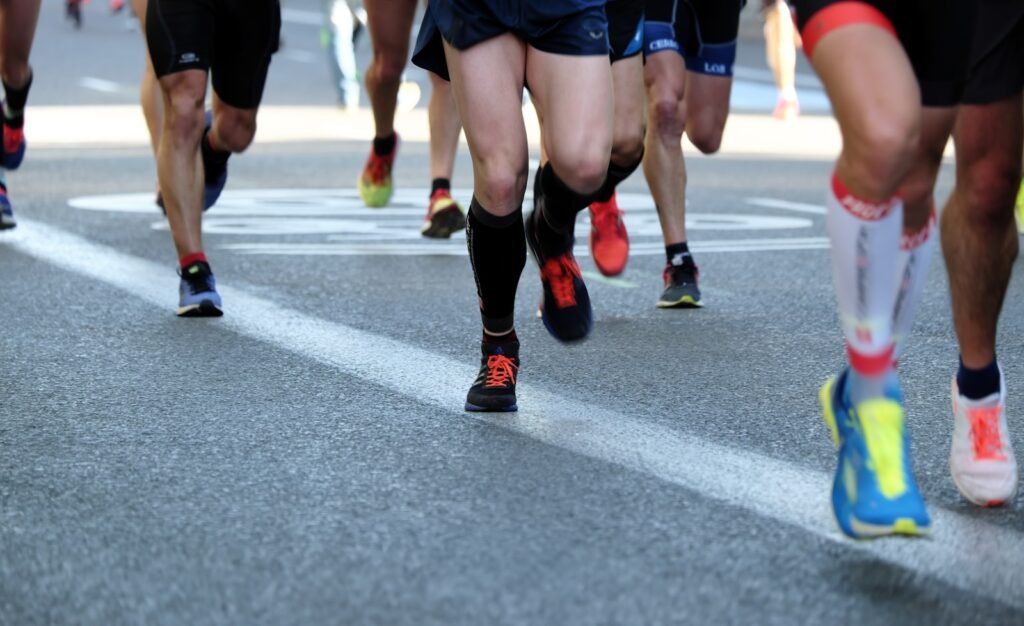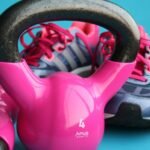Ever wondered how to stay fit without stressing your joints? Low-impact cardio offers a smarter way to improve endurance while keeping your body safe. Whether you’re new to fitness or recovering from an injury, these workouts help you stay active without the strain.
By focusing on controlled movements, you can enhance your cardiovascular fitness and even boost your VO2 max—a key indicator of stamina. Unlike high-intensity routines, these exercises let you stay in the fat-burning zone longer, making them efficient for weight management.
Regular sessions can also improve your body’s ability to handle sugar and reduce the risk of chronic issues. The best part? You don’t need fancy equipment—just consistency and the right approach.
Key Takeaways
- Gentle on joints while improving endurance.
- Enhances oxygen efficiency for better stamina.
- Optimizes fat loss without extreme effort.
- Supports long-term metabolic flexibility.
- Easy to maintain for lasting results.
Why Low-Impact Cardio Is a Game-Changer for Heart Health
Want to protect your joints while staying active? Low-impact cardio lets you move without the wear and tear of high-intensity workouts. Unlike running, which pounds your joints, swimming or cycling keeps your heart rate steady while building endurance.
Sustained moderate effort, like brisk walking, strengthens your cardiac output. This means your heart pumps blood more efficiently, improving circulation. A 12-week walking program even reduced LDL cholesterol by 11%, according to a recent study.
The American Heart Association recommends 150 minutes of moderate exercise weekly. Activities like swimming or cycling fit perfectly—they’re gentle on your body but powerful for long-term benefits.
| Activity | Joint Stress | Heart Rate Zone |
|---|---|---|
| Running | High | Zone 3-4 |
| Swimming | Low | Zone 2 |
| Cycling | Low | Zone 2-3 |
Zone 2 workouts, like steady cycling, boost mitochondrial function. This helps your cells produce energy better, supporting overall heart health. The result? A stronger, more resilient cardiovascular system.
Understanding VO2 Max and Its Role in Fitness
What if one number could reveal your true endurance potential? VO2 max measures how efficiently your body uses oxygen during exercise. The higher your score, the longer you can sustain intense effort without fatigue.
Elite cyclists and runners rely on this metric to optimize training. A Mayo Clinic study found that higher VO2 max levels correlate with longer lifespans. Sedentary adults typically score 35–40 mL/kg/min, while athletes hit 60+.
How to Measure Your VO2 Max
Lab tests are the gold standard. You’ll run on a treadmill while technicians analyze your breath and heart rate. But there are simpler options:
- Smartwatch estimates: Devices like Garmin use algorithms to predict your score.
- Cooper Test: Run as far as possible in 12 minutes, then plug your distance into an online calculator.
“VO2 max isn’t just for pros—it’s a snapshot of your cardiovascular resilience.”
For accuracy, pair wearable data with occasional lab tests. Tracking changes helps gauge progress in fitness routines. Pro athletes often retest monthly to adjust training zones.
The Science Behind Fat-Burning Zones
Did you know your body burns fat differently at various intensity levels? Lower-intensity workouts, like brisk walking, tap into fat stores for energy. Higher-intensity efforts, such as sprinting, rely more on glycogen.
In heart rate zones, Zone 2 (60–70% of your max) is ideal for fat adaptation. Research shows 65% of calories burned here come from fat. Push into Zone 4, and that drops to 30%, but total calories burned rise.
Calculating Your Fat-Burning Zone
Two methods help find your sweet spot:
- Simple formula: 220 – your age = max HR. Multiply by 0.6 and 0.7 for Zone 2 range.
- Karvonen formula: Accounts for resting HR. For a 45-year-old with resting HR 65:
- Max HR = 220 – 45 = 175
- Zone 2 = [(175 – 65) × 0.6] + 65 = 131 BPM (lower end)
| Energy Source | Zone 2 (60–70%) | Zone 4 (80–90%) |
|---|---|---|
| Fat | 65% of calories | 30% of calories |
| Glycogen | 35% | 70% |
“Zone 2 training teaches your body to oxidize fat more efficiently—a game-changer for endurance.” — Sports Physiologist Dr. Jane Carter
For accuracy, devices like the Polar H10 chest strap track real-time data. Wrist-based monitors can lag during rapid changes.
Top Low-Impact Cardio Exercises for Heart Health
Looking for effective ways to stay active without straining your joints? These workouts blend gentleness with results, perfect for boosting stamina and overall wellness. Let’s dive into two proven favorites.
Walking: The Underrated Powerhouse
Brisk walking at 3.5–4 mph engages your whole body while keeping stress minimal. Swing your arms to increase calorie burn by 20%, especially with Nordic poles. A Harvard study found this pace cuts diabetes risk by 30%.
For endurance, aim for 30–45 minutes daily. The steady rhythm keeps your heart rate in the ideal zone for long-term benefits. No gym required—just consistent steps.
Swimming: Full-Body, Low-Impact Workout
Water’s resistance builds 28% more muscle than cycling, with zero joint pressure. A 6-month aquatic program reduced hypertension in 68% of participants, per the Journal of Sports Medicine.
Count laps to track progress. Start with 10–15 lengths, mixing strokes like freestyle and backstroke. The cooling effect makes it ideal for summer exercise.
| Activity | Calories/Hour* | Best For |
|---|---|---|
| Walking (4 mph) | 280–350 | Endurance, accessibility |
| Swimming (moderate) | 400–500 | Muscle tone, joint relief |
“Water workouts offer resistance in all directions, making them uniquely efficient.” — Dr. Lisa Monroe, Aquatic Fitness Association
How to Incorporate Zone 2 Training Into Your Routine
Ready to optimize your workouts without pushing too hard? Zone 2 training balances effort and recovery for lasting results. Three weekly sessions can boost efficiency, research shows.
Start with a simple schedule: cycle for 45 minutes on Tuesdays, Thursdays, and Sundays. This consistency keeps your heart rate zone steady while building endurance.
Use the “talk test” to check intensity. If you can speak in complete sentences but not sing, you’re in the right range. Push too hard, and you’ll slip into higher zones.
| Week | Duration | Activity |
|---|---|---|
| 1–2 | 20–30 mins | Cycling/Walking |
| 3–4 | 35–45 mins | Swimming/Elliptical |
| 5–8 | 50–60 mins | Mix of activities |
Pair workouts with yoga on rest days. Stretching aids recovery without disrupting progress. Avoid mistaking Zone 2 for a leisurely stroll—aim for purposeful effort.
“Zone 2 isn’t about laziness; it’s about teaching your body to sustain effort efficiently.” — Coach Mark Rippetoe
Gradually increase your time from 20 to 60 minutes over two months. This steady climb prevents burnout while adapting your system.
The Metabolic Benefits of Low-Impact Cardio
Did you know gentle workouts can supercharge your body’s energy systems? Activities like swimming or brisk walking trigger AMPK, an enzyme that boosts cellular fuel production. This means more energy for daily tasks without exhausting your joints.

A Johns Hopkins study found prediabetic walkers lowered HbA1c levels by 12% in six months. Steady movement improves blood sugar control, reducing risks linked to metabolic conditions. Zone 2 workouts, like cycling, increase glucose uptake by 40% in diabetics.
Key Advantages:
- Afterburn effect: A 60-minute swim burns 14% more calories post-workout than HIIT.
- Sleep boost: Regular moderate exercise improves deep sleep by 22% (National Sleep Foundation).
- Myth busted: Sweating isn’t required—consistent effort matters more for weight loss.
“Walking at a moderate pace regulates insulin sensitivity better than sporadic intense sessions.” — Johns Hopkins Research Team
| Activity | Calories Burned (Post-Workout) |
|---|---|
| Swimming (60 mins) | 85–100 extra calories |
| HIIT (20 mins) | 70–80 extra calories |
Your blood circulation improves too, delivering oxygen efficiently. This combo of metabolism and energy optimization makes low-impact routines a powerhouse for sustainable results.
Heart Rate Monitoring: Tools and Techniques
How do top athletes fine-tune their training with real-time data? Precision tracking transforms workouts from guesses to science. Whether you’re cycling indoors or swimming laps, the right tools help you stay in optimal heart rate zones.
Using Wearables for Accurate Tracking
Not all devices measure exertion equally. Optical sensors (like Apple Watch SE) use LED lights to detect blood flow, while ECG sensors (Coros Pace 3) track electrical signals. Chest straps, such as the Polar H10, offer 99% accuracy—ideal for triathletes.
| Device | Price | Sensor Type | Best For |
|---|---|---|---|
| Apple Watch SE | $249 | Optical | Daily use, casual workouts |
| Coros Pace 3 | $229 | ECG | Runners, cyclists |
For indoor cyclists, pair a chest strap with Zwift. The app adjusts resistance automatically based on your percentage maximum effort. Place the strap just below your pectorals for consistent readings.
“Medications like beta blockers can lower your maximum heart rate by 10–15 BPM—adjust zones accordingly.” — Dr. Elena Torres, Sports Cardiologist
- Calibration tip: Run a lap at 80% effort to confirm device accuracy.
- Battery life: Chest straps last 400+ hours; recharge watches nightly.
- Threshold alerts: Set notifications when exceeding anaerobic thresholds.
Consistency matters more than fancy features. A 2023 study found Garmin’s optical sensor matched chest straps 92% of the time—Whoop trailed at 85%. Stick with one system to track trends reliably.
Getting Started: A Beginner’s Plan for Low-Impact Cardio
New to fitness? A smart start makes all the difference. Begin at 50% of your max heart rate, then gradually climb to 70%. This *steady progress* builds endurance without overwhelming your body.

Weeks 1–2: Walk for 20 minutes, three times weekly. Aim for a 4/10 effort *level*—you should breathe easily but feel engaged. Use a timer to track your *time* consistently.
Weeks 3–4: Add 5-minute brisk intervals. Alternate between relaxed and purposeful strides. This *way*, you’ll challenge your stamina while keeping joints safe.
| Phase | Activity | Duration |
|---|---|---|
| Month 1 | Walking + Intervals | 20–30 minutes |
| Month 2 | Recumbent Bike | 30 minutes |
Hydration fuels performance. Drink 5–7 oz of water every 15 *minutes* during workouts. Dehydration can skew heart rate data, making it harder to gauge effort.
“Beginners thrive with structure. A plan removes guesswork and builds confidence.” — Fitness Coach Tara Roberts
- Track progress: Note your heart rate and perceived exertion after each session.
- Rest days: Include two weekly recovery days for adaptation.
- Printable tracker: Download our template to log milestones.
By Month 2, you’ll notice a higher tolerance for *time* and effort. Celebrate small wins—they add up to lasting results.
Conclusion
Staying active shouldn’t feel like a struggle—discover how to make it sustainable. Low-impact cardio offers three key benefits: joint-friendly accessibility, improved stamina, and long-term metabolic gains. Forget pushing to exhaustion; gradual progress builds real endurance.
Pair these workouts with resistance training twice weekly for balanced fitness. Your future self will thank you for starting today.
Ready to begin? Download our free Zone 2 workout playlist to stay motivated. Small steps lead to big results—take yours now.




